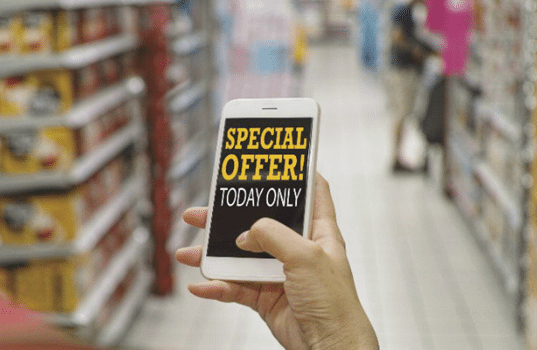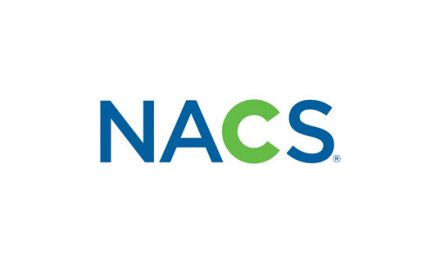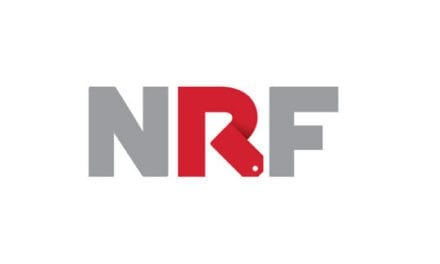The key to this is transactional insights and consumer group segmentation based on transaction data. So make sure you meet the customer where he is and cover your basic three locations: off premise, at the pump and in the store.
“Off premise with a transactional mobile app is a must,” Bakker said. “Gone are the days where customers discover your specials in the window or aisle. Shoppers look on their mobile device and expect to see your offering before they decide where to go.”
Bakker recommends retailers engage with shoppers at the pump and make them an offer to come in.
“At Outsite Networks, we’ve had market at the pump with video screens since 2000, subsequent with audio and NFC tags, and we now see that the day of big expensive screens at the pump and cash register is changing to bright private screens in the consumers hands—at the pump and in the store,” Bakker said. “Mobile screens should be consumer activated with tap-beacons for consumer invited content rather than invasive beacon methods that inundate consumers with content just because they can.”
In-store, one should have an engagement kiosk where consumers can interact with their loyalty program. These kiosks can aide the cashier in recruitment of loyalty members and facilitate in the more traditional loyalty cards, as not all loyalty consumers are fully mobile quite yet.
Mistakes to Avoid
According to Yee, in a 2015 Loyalty Report by Bond Brand Loyalty, where more than 10,000 consumers were surveyed, one-third of consumers agree they would not be loyal to a brand if it were not for a loyalty program, and 70% modified when and where they shop to maximize points.
“Loyalty is for everyone, as it is one of retailer’s best tools to gather customer transactional data and preferences to know the customer; and with this knowledge, retailers will have the opportunity to deliver personalized, relevant content and incentives to best reach, engage and cultivate customer relationships that will build and sustain customer loyalty and retention,” Yee said.
Bakker stresses that while loyalty previously was not for everyone, it now is. “You are under attack with loyalty programs all around you,” Bakker said.
That said, two main things can go wrong:
• If your mobile platform is not transactional, you will not be able to be relevant to the consumers transaction history for segmentation.
• The retailer treats loyalty as a “me too” activity and not as the core of their business.
“Loyalty is not a light-switch that you put in and flip it on,” Bakker said. “ You have to be fully committed to protect and work your most precious consumers every step along the way. From your marketing programs, offers, rewards, messaging and make it part of your brand.”
At minimum, Bakker said retailers need to offer a few clubs for coffee, fountain and beverages to hold those customers that have a high transaction count and habit. These customers now have places to go where they will get rewarded for their loyalty.
Loyalty programs can go wrong if the rewards do not deliver value and are not meaningful to the customer. It is extremely important for retailers to analyze customer data and understand customer behavior to tailor rewards based on those behaviors and customer preferences.
And should your efforts be heavily focused on discounting?
“For the most part, loyalty programs are discounting products to your best customers,” Taylor said. “But it is not a win-win for everyone. If they are already your best customers, why provide discounts for them?”
According to Taylor, loyalty should not be about discounting. Loyalty should be about value.
“While they are related, they are fairly distinct things,” Taylor said. “Value is always in the eye of the customer. What is the value that I can offer to a specific customer that resonates with them and makes them realize that makes me invaluable and indispensable?”
When it comes to loyalty, the biggest mistake a retailer can make is to do nothing and not have a customer loyalty program. Yee suggests retailers uphold the following basic principles:
• Make it easy for your customers to understand what they need to do and how they can benefit from the program.
• The reward must be attainable and within reach.
• Make it relevant and meaningful: Make sure you know what your customers value. The rewards must be relevant and meaningful to them.
• Change your program’s features from time to time–provide new rewards.
• Keep in touch with your customers by communicating information and offers that will appeal to them.
• Analyze, utilize and leverage customer data to continually understand, engage and deliver the experience customers expect from the brand.
What the Future Holds
The future of loyalty programs are on the rise, as retailers realize the need to transform their practices, processes and technology solutions to take them to the next level of their customer engagement journey in order to meet and/or exceed customer expectations.
“As consumers continue to push retailers to offer a seamless shopping experience across all channels, and as technology solutions enable retailers to continue to do so, loyalty programs are one of the best tools to know the customer, reach and engage the customer, and deliver the experience that customers expect,” Yee said. “It is imperative for loyalty programs to track and consolidate purchases/rewards from all channels—in-store, Web and mobile—and enable customers to redeem their rewards from the channel of their choice.”
In the future, Bakker envisions loyalty will be ubiquitous, mobile and transactional. Big screens will disappear from countertops and dispensers and will light up the palm of their hands with private, relevant offers based on their transaction history.
“Google and Apple wallets will play a big role,” Bakker said. “Major oil companies will enable their distribution networks with brand-wide solutions that are simple to execute for the single-store operators so they can remain competitive with the large retail networks that are chasing the consumer.”










